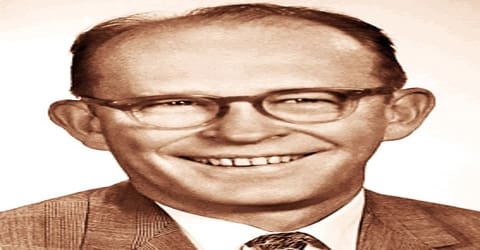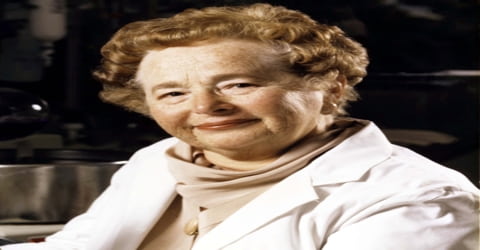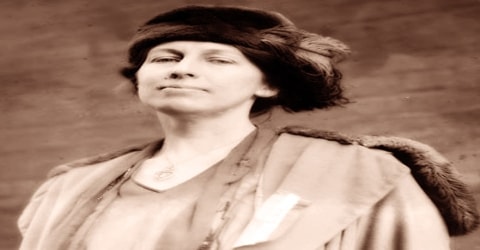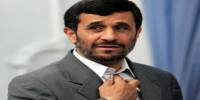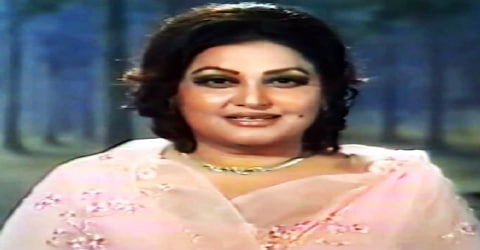Biography of Willard Libby
Willard Libby – American physical chemist.
Name: Willard Frank Libby
Date of Birth: December 17, 1908
Place of Birth: Grand Valley, Colorado
Date of Death: September 8, 1980 (aged 71)
Place of Death: Los Angeles, California, United States
Occupation: Chemists
Father: Ora Edward Libby
Mother: Eva May
Spouse/Ex: Leonor Hickey (m. 1940-1966), Leona Woods Marshall (m. 1966)
Children: Janet Eva, Susan Charlotte
Early Life
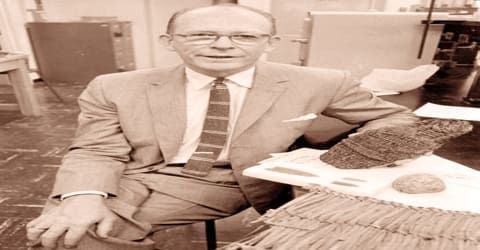
An American chemist whose technique of carbon-14 (or radiocarbon) dating provided an extremely valuable tool for archaeologists, anthropologists, and earth scientists, Willard Frank Libby was born in Grand Valley, Colorado, on December 17, 1908, the son of farmers Ora Edward Libby and his wife Eva May (née Rivers). He was a Nobel Prize laureate and Guggenheim Fellowship recipient was a pioneer in the use of differential decay of the Carbon 14 Isotope for dating organic materials; what we now call radiocarbon dating. He addressed this scientific puzzle after developing a gaseous diffusion enrichment process for uranium-235. He was awarded the ‘Nobel Prize’ in Chemistry in 1960 for developing the technique of radiocarbon dating or carbon-14 dating, a process that proved to be extremely beneficial in the field of paleontology and archaeology.
A 1927 chemistry graduate of the University of California at Berkeley, from which Libby received his doctorate in 1933, he studied radioactive elements and developed sensitive Geiger counters to measure weak natural and artificial radioactivity. During World War II he worked in the Manhattan Project’s Substitute Alloy Materials (SAM) Laboratories at Columbia University, developing the gaseous diffusion process for uranium enrichment. His work also involved the identification, separation, and control of ‘heavy water’ containing deuterium and tritium, both isotopes of Hydrogen. These processes were important to the building of the Hiroshima bomb. Through his post-war appointment to the Atomic Energy Commission, he embraced the cause of peaceful nuclear use.
At the time of the ‘Second World War’ Libby contributed to developing the procedure of gaseous diffusion for uranium enrichment while working for the ‘Manhattan Project’ at the ‘Columbia University’. He served as a Professor at the ‘Institute for Nuclear Studies’ of the ‘University of Chicago’ and later as Professor of Chemistry at ‘University of California’. He was a member of ‘General Advisory Committee’ of ‘Atomic Energy Commission’ and later inducted as Atomic Energy Commissioner. He became Director of the ‘Institute of Geophysics and Planetary Physics’ at the ‘University of California’. He took part in the ‘Atoms for Peace’ program, supported the administration for atmospheric nuclear testing and advocated measures to combat the anticipated nuclear threat of the Soviet Union.
Childhood, Family and Educational Life

Willard Libby, in full Willard Frank Libby, was born on December 17, 1908, in Grand Valley, Colorado to Ora Edward Libby and Eva May (née Rivers) as one of their three sons among five children. His parents were farmers. He had two brothers, Elmer and Raymond, and two sisters, Eva and Evelyn. Libby began his education in a two-room Colorado schoolhouse. When he was five, Libby’s parents moved to Santa Rosa, California. He attended Analy High School, in Sebastopol, from which he graduated in 1926. Libby, who grew to be 6 feet 2 inches (188 cm) tall, played tackle on the high school football team.
Libby got enrolled at the ‘University of California’ at Berkeley in 1927 and obtained a B.S. in 1931. Thereafter he pursued his postgraduate doctorate studies at the university under the guidance of Wendell Mitchell Latimer. He earned a Ph.D. in 1933 submitting his doctoral thesis on the “Radioactivity of ordinary elements, especially samarium and neodymium: method of detection”. He found out that the chemical element samarium’s naturally enduring isotopes mainly decay by the discharge of alpha particles.
After graduation, Libby joined the faculty at Berkeley, where he rose through the ranks from an instructor (1933) to assistant professor (1938) to associate professor (1945).
Personal Life
In 1940, Willard Libby married Leonor Hickey, a physical education teacher. They had twin daughters, Janet Eva and Susan Charlotte, who were born in 1945.
In 1966 Libby divorced Leonor and married noted nuclear physicist Leona Woods Marshall, one of the original developers of the first nuclear reactor of the world, ‘Chicago Pile-1’. Leona was associated with the ‘RAND Corporation’ headquartered at Santa Monica, California. Libby had two stepsons from his second marriage.
Career and Works
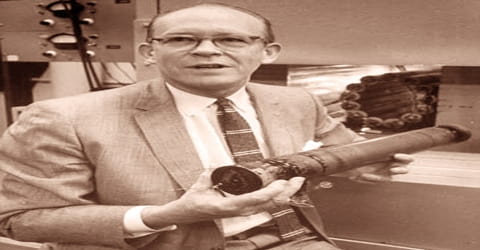
In 1933 Willard Libby was inducted by the ‘University of California’, Berkeley as an instructor in its Department of Chemistry. He received successive promotions in the next ten years, first as an Assistant Professor in 1938 and then as Associate Professor in 1945. During the 1930s he focussed on developing the sensitive Geiger counters for measuring weak natural and artificial radioactivity.
In 1941 Libby received a Guggenheim fellowship to work at Princeton University in New Jersey, but his work was interrupted by the entry of the United States into World War II. On December 8, 1941, the day after the Japanese attack on Pearl Harbor brought the United States into World War II, Libby volunteered his services to Nobel Prize laureate Harold Urey. Urey arranged for Libby to be given leave from the University of California and to join him at Columbia University to work on the Manhattan Project, the wartime project to develop atomic bombs, at what became its Substitute Alloy Materials (SAM) Laboratories. During his time in the New York City area, Libby was a resident of Leonia, New Jersey.
Over the next three years, Libby worked on the gaseous diffusion process for uranium enrichment. An atomic bomb required fissile material, and the fissile uranium-235 made up only 0.7 percent of natural uranium. The SAM Laboratories, therefore, had to find a way of separating kilograms of it from the more abundant uranium-238. Gaseous diffusion worked on the principle that a lighter gas diffuses through a barrier faster than a heavier one at a rate inversely proportional to its molecular weight. But the only known gas containing uranium was the highly corrosive uranium hexafluoride, and a suitable barrier was hard to find.
During 1942 Libby and his colleagues examined several barriers and media to prevent them from the compound uranium hexafluoride that is used in the uranium enrichment process. Later he carried out several tests that suggested that the ‘Norris-Adler’ barrier developed by Edward O. Norris and Edward Adler, which is made of powdered nickel’ would work. Postwar Libby joined the ‘University of Chicago’ in 1945 as Professor in the Department of Chemistry at the new ‘Institute for Nuclear Studies’ (at present the ‘Enrico Fermi Institute for Nuclear Studies’) and continued with his pre-war research on radioactivity. He served the university till 1959.
In addition to developing a suitable barrier, the SAM Laboratories also had to assist in the design of a gaseous separation plant, which became known as K-25. Libby helped with the engineers from Kellex to produce a workable design for a pilot plant. Libby conducted a series of tests that indicated that the Norris-Adler barrier would work, and he remained confident that with an all-out effort, the remaining problems with it could be solved. Although doubts remained, construction work began on the K-25 full-scale production plant in September 1943. As 1943 gave way to 1944, many problems remained. Tests began on the machinery at K-25 in April 1944 without a barrier. Attention turned to a new process developed by Kellex. Finally, in July 1944, Kellex barriers began to be installed in K-25. K-25 commenced operation in February 1945, and as cascade, after cascade came online, the quality of the product increased. By April 1945, K-25 had attained a 1.1% enrichment. Uranium partially enriched in K-25 was fed into the calutrons at Y-12 to complete the enrichment process.
During the late 1950s, Libby, and physicist Edward Teller, both committed to the Cold War and both prominent advocates of nuclear weapons testing opposed Nobel chemistry and peace laureate Linus Pauling’s petition for a ban on nuclear weapons. To prove the survivability of nuclear war, Libby built a fallout shelter at his house, an event that was widely publicized. The shelter and house burned down several weeks later, however, which caused physicist and nuclear testing critic Leo Szilard to joke, “This proves not only that there is a God but that he has a sense of humor.” While associated with the Manhattan Project (1941-45), Libby helped develop a method for separating uranium isotopes by gaseous diffusion, an essential step in the creation of the atomic bomb.
In 1946 Libby displayed that traces of tritium, the most abundant hydrogen isotope, are produced by the cosmic rays in the upper atmosphere and these could be applied to trace atmospheric water. He eventually developed a procedure to date well water and thereby wine. Because it had been known since 1939 that cosmic rays create showers of neutrons on striking atoms in the atmosphere, and because the atmosphere contains about 78 percent nitrogen, which absorbs neutrons to decay into the radioactive isotope carbon-14, Libby concluded that traces of carbon-14 should always exist in atmospheric carbon dioxide.
Libby published his theory in 1946 and expanded on it in his monograph Radiocarbon Dating in 1955. He also developed sensitive radiation detectors that could use the technique. Tests against sequoia with known dates from their tree rings showed radiocarbon dating to be reliable and accurate. The technique revolutionized archaeology, paleontology and other disciplines that dealt with ancient artefacts. In 1960, Libby was awarded the Nobel Prize in Chemistry “for his method to use carbon-14 for age determination in archaeology, geology, geophysics, and other branches of science”. He also discovered that tritium similarly could be used for dating water, and therefore wine.
Libby believed fully in the possibilities and promises of atomic science and carried this message for the Eisenhower administration into the media and on the lecture circuit. Libby’s advocacy for atoms for peace while with the Atomic Energy Commission did, however, put him publicly at odds with some other noted scientists, for example, Linus Pauling, who believed that all testing should cease immediately.
In 1950 Gordon Dean, Chairman of the US ‘Atomic Energy Commission’ (AEC) inducted Libby into AEC’s ‘General Advisory Committee’ (GAC). In 1952, the ‘University of Chicago’ published his book titled ‘Radiocarbon Dating’. Following the recommendation of Lewis Strauss, a successor of Dean, President Dwight D. Eisenhower inducted Libby as an AEC commissioner on October 1, 1954. There Libby set up a laboratory at the ‘Carnegie Institute’ to carry out his research on amino acids. While holding such position he played a significant role to promote the ‘Atoms for Peace’ program of President Eisenhower. He remained one of the delegates of the United States during the Geneva Conferences on ‘Peaceful Uses of Atomic Energy’ twice in 1955 and in 1958. Libby backed physicist Edward Teller in a debate that dealt with the subject of pursuing a crash program for developing a hydrogen bomb. The duo was committed to the ‘Cold War’ and strongly advocated for nuclear weapons testing.
As the only scientist among the five AEC commissioners, it fell to Libby to defend the Eisenhower administration’s stance on atmospheric nuclear testing. He argued that the dangers of radiation from nuclear tests were less than that from chest X-rays and therefore less important than the risk of having an inadequate nuclear arsenal, but his arguments failed to convince the scientific community or reassure the public. In January 1956, he publicly revealed the existence of Project Sunshine, a series of research studies to ascertain the impact of radioactive fallout on the world’s population that he had initiated in 1953 while serving on the GAC. By 1958, even Libby and Teller were supporting limits on atmospheric nuclear testing.
Libby put his belief in the survivability of nuclear attack into practice in the construction of his home fallout shelter, which famously burnt immediately upon completion. His enthusiasm occasionally could lead to nearly laughable missteps; for example, he counseled the residents of a rural town with one solitary through-road to flee to the countryside in case of attack. Since this course of action would have been a virtual guarantee of traffic gridlock, and starvation or dehydration would unavoidably await anyone attempting this strategy, his audience took his advice with the proverbial grain of salt. No such silliness detracts from the facts of his contribution to every discipline that deals with time radiocarbon dating assure him a place in the pantheon of the greats.
However, on June 30, 1959, Libby resigned from the position to join the ‘University of California’ at Los Angeles as a Professor of Chemistry, a position he served till he became professor emeritus in 1976. He remained a member of the editorial board of ‘Proceedings of the National Academy of Sciences’ from 1960 and that of ‘Science’ from 1962. Libby was a member of several learned societies including being the Foreign Member of the ‘Royal Swedish Academy of Sciences’ (1960). From January 1, 1962, till 1976 Libby remained Director of the ‘Institute of Geophysics and Planetary Physics’ at the ‘University of California’. From 1963 he served as Director of the ‘Douglas Aircraft Company’.
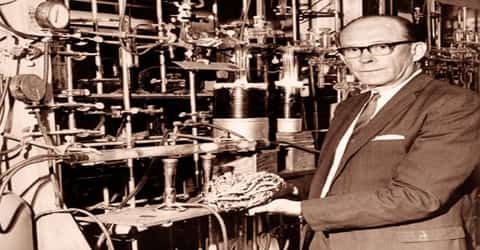
Libby started the first Environmental Engineering program at UCLA in 1972. As a member of the California Air Resources Board, he worked to develop and improve California’s air pollution standards. He established a research program to investigate heterogeneous catalysis with the idea of reducing emissions from motor vehicles through more complete fuel combustion. The election of Richard Nixon as president in 1968 generated speculation that Libby might be appointed as Presidential Science Advisor. There was a storm of protest from scientists who felt that Libby was too conservative, and the offer was not made. Although Libby retired and became a professor emeritus in 1976, he remained professionally active until his death in 1980. He was a member of the ‘California Air Resources Board’ and worked in improving and developing the air pollution standards of California.
Awards and Honor
In 1960 Willard Libby received the ‘Nobel Prize’ in Chemistry.
In addition to the Nobel Prize, Libby received numerous honors and awards, including Columbia University’s Chandler Medal in 1954, the Remsen Memorial Lecture Award in 1955, the Bicentennial Lecture Award from the City College of New York and the Nuclear Applications in Chemistry Award in 1956, the Franklin Institute’s Elliott Cresson Medal in 1957, the American Chemical Society’s Willard Gibbs Award in 1958, the Joseph Priestley Award from Dickinson College and the Albert Einstein Medal in 1959, the Geological Society of America’s Arthur L. Day Medal in 1961, the Gold Medal of the American Institute of Chemists in 1970, and the Lehman Award from the New York Academy of Sciences in 1971.
Death and Legacy
Willard Libby died at the UCLA Medical Center in Los Angeles on September 8, 1980, from a blood clot in his lung complicated by pneumonia. His papers are in the Charles E. Young Research Library at the UCLA. Seven volumes of his papers were edited by Leona and Rainer Berger and published in 1981.
In 1949 Libby developed a process of radiocarbon dating or carbon-14 dating that uses the properties of radiocarbon (14C), a radioactive isotope of carbon, to help in ascertaining the age of ancient organic objects. This revolutionary process proved to be an immensely valuable device for archaeologists, anthropologists, geologists, and paleontologists and eventually became a standard tool.
In nominating Libby for the Nobel Prize, one scientist stated, “Seldom has a single discovery in chemistry had such an impact on the thinking in so many fields of human endeavor. Seldom has a single discovery generated such wide public interest.”
Libby was an elected member of the National Academy of Sciences, the American Academy of Arts and Sciences, and the American Philosophical Society. He was elected a member of the National Academy of Sciences in 1950. Analy High School library has a mural of Libby, and a Sebastopol city park and a nearby highway are named in his honor. Libby’s 1947 paper on radiocarbon dating was honored by a Citation for Chemical Breakthrough Award from the Division of History of Chemistry of the American Chemical Society presented to the University of Chicago in 2016.
Information Source:
